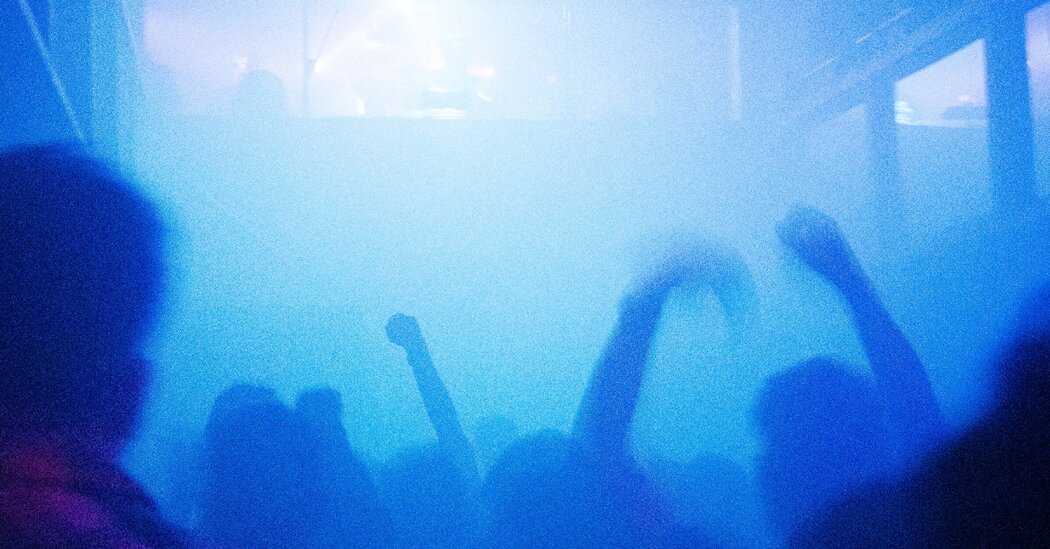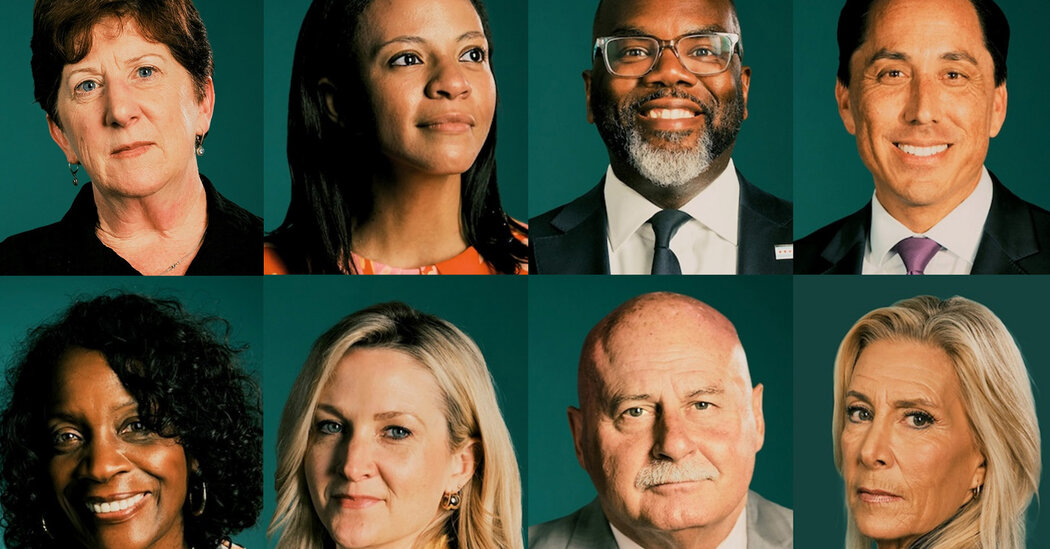On a recent Friday night at Paragon, a two-level dance club that sits under train tracks in Bushwick, Brooklyn, partygoers jerked their bodies to the thump of rave music. In the less roomy basement, silhouettes swayed as the flashes of blue from the ceiling’s grid of LED lights revealed young faces.
It was “def a good night for us,” John Barclay, the owner of Paragon, said in a text message the next day.
But a packed dance floor alone does not equal success for a nightclub: “‘A good Friday and Saturday night in 2025 is not enough’ is the easiest way to put it,” Mr. Barclay, a nightlife veteran, added in an interview.
The club is closing April 26: “After almost 3 years of running a venue with some of the world’s best people we simply cannot afford the financial reality of this industry in 2025 and will be closing our doors this April,” the club posted on its social media earlier this year.
With the bitter ecstasy of a goodbye rave, a cluster of nightclubs, stretching from Bushwick to nearby Williamsburg, have been going out of business in recent months — casualties of stubborn rent, spiking insurance rates and decreased revenue from young people’s drinking less alcohol.
The closing of Paragon, a club that has sold-out nights, is a reminder that the nightlife business is fickle and partly dependent on the commercial real estate market, though, according to the Office of Nightlife’s annual report, more than 6,000 nightlife businesses have opened since the pandemic.
“That hit everybody hard and kind of made everybody question what’s happening out there,” said Rafael Ohayon, who runs the club Gabriela in Williamsburg with the D.J. Eli Escobar, referring to Paragon’s closing. “That was way too soon,” he added.
Once a low-rent haven for a creative class, Williamsburg has transformed to lean toward high-end retail chains and luxury condos. Although rent prices in certain parts of the neighborhood haven’t reached their prepandemic highs, they have been steadily increasing since 2021, according to a report from the Real Estate Board of New York, released in 2024. Rent in one set of blocks jumped 70 percent since 2023.
Alex Picken, who owns Picken Real Estate, a brokerage company that specializes in hospitality, also noticed the uptick in rent in his dealings. He said that most warehouses in the neighborhood that may have been adapted into a nightclub once could have gone for $10 to $20 per square foot: “Now, it’s hard to find anything under $30 a square foot.” (Mr. Barclay declined to disclose Paragon’s rent price.)
Rent became an issue for Freehold, the popular cafe turned nightclub on the south side of Williamsburg, after new owners bought the building and two adjacent parcels. Brice Jones, the chief executive of Freehold, said that in 2023, he wrapped up lease extension talks in a process known as baseball arbitration, in which the landlord and the tenant present their separate valuations to a third party, which then decides the one that is most reasonable. The arbitrator sided with the landlord, Mr. Jones said, tripling the rent from what had been around $21,000 a month.
Like many other hospitality spaces, Freehold had been struggling to make the money it had before the onset of the pandemic. Even with the bolt of post-lockdown enthusiasm that hit nightlife in the summer of 2021, Freehold ended the year with only 55 percent of the revenue it saw in 2019, Mr. Jones said.
“I remember looking at the sales report in Freehold, and I’m like, ‘How is this that bad?’” Mr. Jones said. “I’d see the line around the corner, and I’d be like someone’s either stealing or something’s wrong here. There’s, like, a glitch in the system.”
Insurance
In the third quarter of 2024, insurance premiums in the commercial property and casualty market, which includes physical damage losses and legal liabilities, rose by 5.1 percent from the previous quarter, according to a report from the Council of Insurance Agents & Brokers. Jelani Fenton, chief executive of E.G. Bowman Co., an insurance agency based in New York, said that a big reason nightclubs are hit with larger rates is the rising cost of “plaintiff-friendly” juries in the state of New York.
“Restaurants, bars and other establishments could get pulled into a lawsuit from a client who injures a third party after a night of drinking,” he said in an email, “so many insurance carriers are adjusting pricing for the increased risk of a lawsuit that names the restaurant as the ‘at-fault’ party.”
Insurance premiums had been a growing burden for Gio Gulez and Mehmet Erkaya, the two owners of TBA Brooklyn, a popular midsize Williamsburg nightclub with a D.I.Y. aesthetic that announced in February that it would close up shop. Mr. Erkaya said that within TBA’s nearly 12 years of business, their insurance costs had gone from $25,000 to $125,000.
“It’s almost like we’re fighting against all these obstacles,” Mr. Gulez said. “And then at some point, like, especially when you age, you say, ‘Well, what are we doing here? Just working for insurance companies.’ It’s almost like we make money, and then on the first day of the month, we just hand it over.”
The Crowds
Nightclubs make money mainly by alcohol sales, and their core demographic are ages 21 to 34. But that crowd has been drinking less than they were prepandemic, according to a Gallup survey, for a variety of possible reasons that include less in-person socializing and a general awareness of alcohol’s risks.
”You’re seeing a real shift in alcohol consumption,” said Max Chodorow, a hospitality industry veteran who owns Jean’s, a restaurant in Manhattan that also holds a subterranean club. “So in turn, you’re seeing a real shift in the sustainability of nightlife in its current format.”
Still, there are clubs that have managed to stand out and be sustainable. Many nightlife regulars consider Gabriela, Mr. Escobar and Mr. Ohayon’s spot, a success story, praising the quality of its D.J.s and ability to draw a crowd — “like a really nice house party,” as Mr. Ohayon describes it.
The steady crowd Gabriela attracts hasn’t insulated its owners from the harshness of staying afloat, with Mr. Ohayon saying that “small business owners are flipping out.” They acknowledged that expenses were rising and the cost is venues like Paragon.
“It offers a lot of the same things that we’re talking about,” Mr. Escobar said. “It’s a singular place in New York nightlife, so it’s hard to wrap your head around that.”







